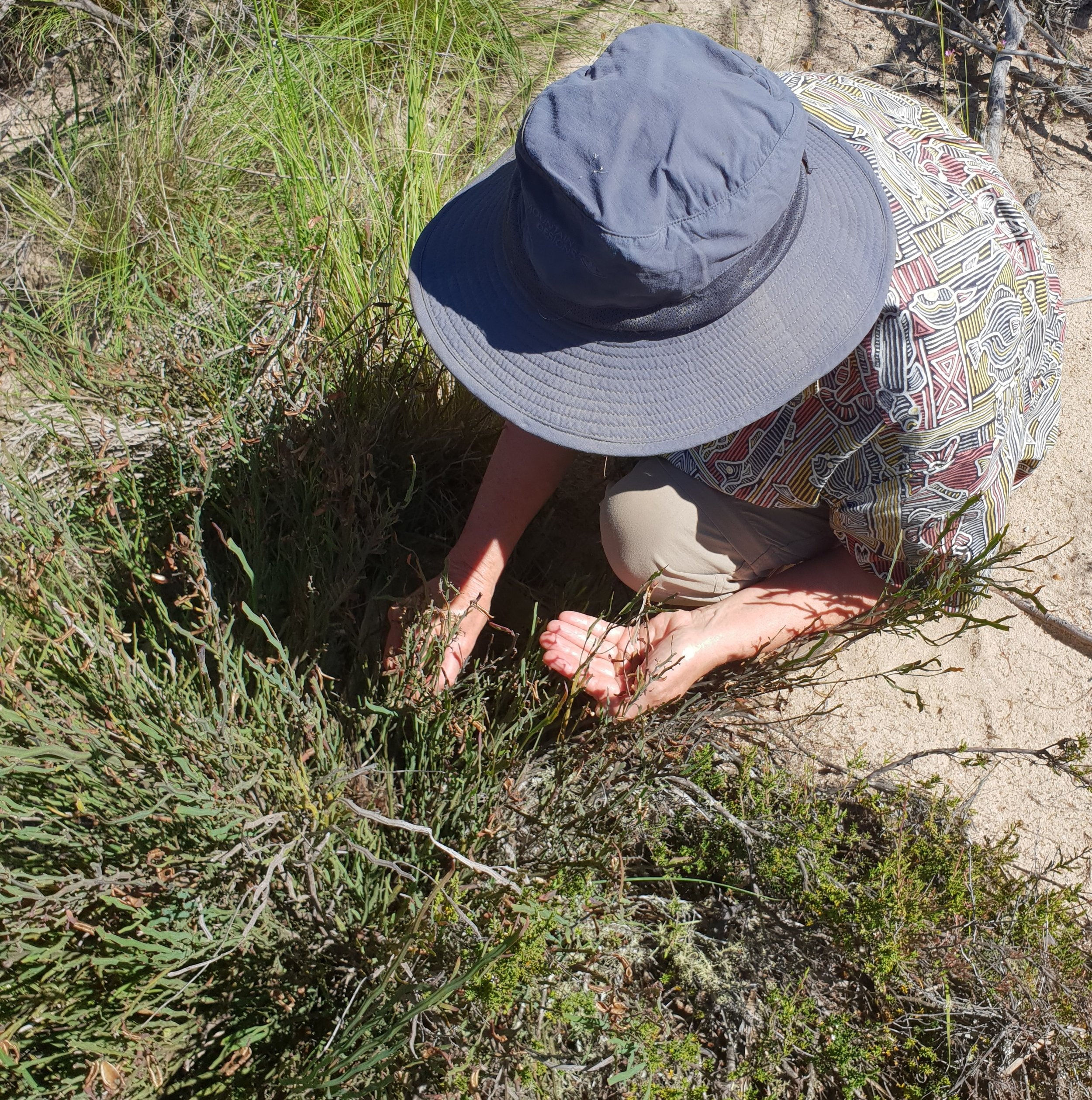SECURING FIRE AFFECTED FLORA IN NSW
Dense Cord-rush (Baloskion longipes) habitat in Kanangra Boyd National Park prior to the 2019/20 bushfires.
Australia is facing an extinction crisis. Climate change, habitat loss, invasive species and disease are putting our diverse and unique native plants and animals at risk. The 2019/20 bushfires that ravaged Queensland, New South Wales and Victoria have placed even more pressure on these species.
Kanangra Boyd National Park prior to the 2019/2020 megafire.
These were fires of unprecedented magnitude and severity that had widespread impacts on native ecosystems across the south-eastern States. In New South Wales, these losses were keenly felt, where well over 5.3 million hectares (6.7% of the State) were burnt. Of this, 37% of the State’s national parks and 42% of state forests were burnt. These bushfires were a wakeup call for many Australians, demonstrating the frightening consequences of a heating climate.
Widespread media coverage was given to the plight of the millions of animals that tragically perished or were injured. However, little attention was focused on the plight of the thousands of native plant impacted by the fires. Some Australian plants have evolved to survive fire. However, many others that occupy cooler, wetter environments have not, and are particularly at risk from fire. Climate change is increasing the frequency and severity of bushfires creating ‘megafires’ and placing more and more species at risk of extinction. In addition, human-induced threats (such as grazing by introduced animals) can have secondary, catastrophic post-fire impacts on threatened plant populations, driving many species towards extinction.
Kanangra-Boyd National Park after bushfire.
Translocation is an important component of threatened flora recovery that establishes new, or supplements existing populations to prevent extinction. Translocation is the deliberate movement of native plants or animals from one location to another. The first step is the collection of seed and plant reproductive tissue (plant germplasm). It is used by threatened species ecologists in times when plant populations are critically low, or threatening processes in the wild are unable to be mitigated (such as the increasing frequency and severity of bushfire).
Project Strategy
The Working Together to Secure Threatened Flora in NSW is a one-year project that will focus on the recovery of five prioritised threatened plants as identified by Gallagher (2020) in south-eastern NSW. These are: Dense Cord-rush (Baloskion longipes), Bombay Bossiaea (Bossiaea bombayensis), Chef's Cap Correa (Correa baeuerlenii), Bredbo Gentian (Gentiana bredboensis) and the Nerriga Grevillea (Grevillea renwickiana). Details are listed below in Appendix 1.
Bossiaea transects with volunteers.
This project forms part of an ongoing partnership between the Threatened Species Conservancy (TSC) and the Department of Planning and Environment (DPE). Our overall objective is to recover 34 high priority threatened plant species impacted by the 2019/20 bushfires. These species are currently not funded by State and Federal Governments. As a not-for-profit organisation, the TSC is able to provide grassroots, community support and access funding not available to State Governments to deliver this objective.
The Working Together to Secure Threatened Flora in NSW project will deliver a series of field-based citizen science germplasm collection events for each of these five species. The TSC has partnered with DPIE, Queanbeyan Palerang Regional Council (QPRC), Atlas of Life in the Coastal Wilderness (ALCW) and Budawang Coast Atlas of Life (BCAL) to deliver the project. The TSC will also consult Traditional Owner groups in the regions where the project will operate to seek input into project planning and delivery. Traditional Owner groups will also be invited to participate in field inspections and plant surveys.
Citizen science field days will take place across a range of National Parks and State Forests in south-eastern NSW (listed below). Sites will be selected from this list on the basis of a range of factors including the suitability of populations for germplasm collection, ease of access and safety. Volunteers will be sourced from two well supported community groups, the Atlas of Life in the Coastal Wilderness and the Budawang Coast Atlas of Life. The TSC will also draw on their existing team of volunteers from the Blue Mountains and Braidwood regions.
Partners
Department of Planning and Environment (DPE)
DPIE is the State Government body responsible for the Saving our Species program, the most comprehensive threatened species recovery program in Australia.
Atlas of Life in the Coastal Wilderness (ALCW)
The ALCW is a community project that provides a web-based database for the community of the south-eastern coast of NSW to record biodiversity observations.
Budawang Coast Atlas of Life (BCAL)
BCAL takes its inspiration from the enormous success of the ALCW. BCAL builds biodiversity knowledge across the region from Moruya, north to Geroa and west to the Ranges.
Bombay Landcare and Upper Shoalhaven Landcare - Local community groups located in Bombay, NSW
La Trobe University
Conservation Status:
Dense Cord Rush, Vulnerable (EPBC)
Bombay Bossiaea, Vulnerable (NSW)
Chef's Cap Correa, Vulnerable (EPBC)
Bredbo Gentian, Vulnerable (EPBC)
Nerriga Grevillea, Endangered (NSW)
Estimated Cost of Project: $135,520
Funding Received: $135,520 from Federal Government Bushfire Recovery for Wildlife and Habitat Community Grants Program
Duration: 1 year
Volunteer seed collecting.
Progress
As of August 2022 field surveys for all five species have been completed and laboratory analysis is underway. Some highlights include:
DPE and TSC visited a site with a population of Nerriga Grevillea which was flowering for the first time in 2006! These flowers have been collected for pollen analysis by La Trobe University.
Seed has been collected from the fire- affected population of Bombay Bossiaea and post-fire survey of seedling survival has been carried out with Bombay Landcare and Upper Shoalhaven Landcare.
Volunteers – interested in getting involved? Contact Christine Christine.allen@tsconservancy.or






